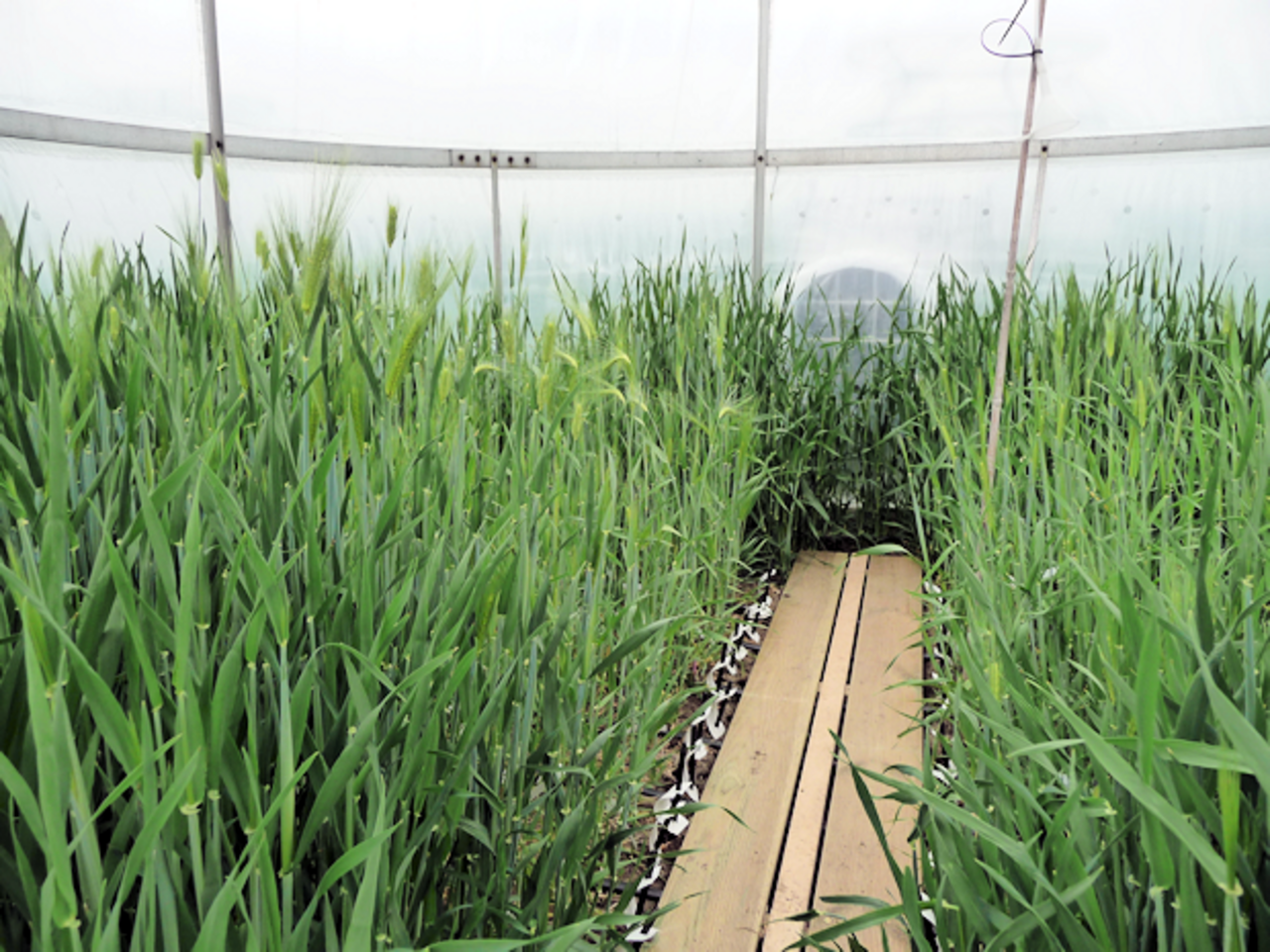Project
Responses of barley genotypes to elevated CO2

Adaptation of agriculture to a changing climate: Analyses of the reaction of different barley genotypes to future CO2-concentrations in order to optimize the so-called CO2 fertilizer effect
Plant growth and yield of C3 crops are known to be positively affected by elevated CO2. It is known that intraspecific variability in the response to CO2 exists among genotypes, however, a systematic evaluation of a broader set of genotypes under field conditions is lacking. Our study aims to investigate the genetic potential in barley in the adaptation to the predicted increase in elevated CO2.
Background and Objective
The continuing increase in atmospheric CO2 concentration will have direct implications for plant growth and agricultural ecosystems, as CO2 is the important resource for plant growth. Plant growth and yield of C3 crops are known to be positively affected by elevated CO2. Although recent evidence from studies with a small number of genotypes suggest that intraspecific variability exists among genotypes, a systematic evaluation of a broader set of diverse genotypes under field conditions is still lacking. However, sufficient genetic variation is a prerequisite that would allow breeders to select for CO2 responsiveness. Here, we study the responses of a large number of diverse barley genotypes to elevated CO2 in order to identify genotypes that are able to utilize elevated CO2 concentration most effectively.
Approach
To get information about the genetic variability in winter barley 100 barley genotypes are grown in open-top field chambers in three consecutive growing seasons and exposed to different CO2 levels. Plants are phenotyped for growth and yield parameters as well as for physiological and morphological traits. Whole genome association analyses are performed based on the phenotypic data.
Results
First results showed significant differences between the genotypes in their response to elevated CO2 for all yield and growth parameters, however, CO2 effect was mor pronounced in 6-rowed compared to 2-rowed genotypes.
Involved external Thünen-Partners
- Julius Kühn-Institut - Bundesforschungsinstitut für Kulturpflanzen (JKI)
(Quedlinburg, Braunschweig, Groß Lüsewitz, Kleinmachnow, Deutschland)
Funding Body
-
Federal Office for Agriculture and Food (BLE)
(national, öffentlich)
Duration
1.2011 - 12.2014
More Information
Funding program: Innovationsförderung
Project status:
finished
Publications
- 0
Weigel H-J, Bender J (2014) Air pollutants: Elevated carbon dioxide. In: Wang Y (ed) Encyclopedia of natural resources. Boca Raton: CRC Press ; Taylor & Francis, pp 925-929, DOI:10.1081/E-ENRA-120049199
- 1
Mitterbauer E, Ordon F, Habekuß A, Erbs M, Enders M, Kilian B, Weigel H-J, Giesemann A, Bender J (2013) Untersuchungen der Reaktionen verschiedener Gerstegenotypen auf zukünftige CO2-Konzentrationen als Grundlage zur züchterischen Optimierung des "CO2-Düngeeffektes". In: Arbeitstagung 2012 der Vereinigung österreichischer Pflanzenzüchter und Saatgutkaufleute am LFZ Raumberg-Gumpenstein. Gumpenstein, pp 65-68
- 2
Bender J, Weigel H-J (2011) Changes in atmospheric chemistry and crop health: a review. Agronomy Sustainable Dev 31(1):81-89, DOI:10.1051/agro/2010013
- 3
Weigel H-J, Bender J (2009) Atmospheric composition - a threat to crop growth and health? In: Feldmann F, Alford DV, Furk C (eds) Crop plant resistance to biotic and abiotic factors : current potential and future demands ; proceedings of the International Symposium on Plant Protection and Plant Health in Europe. Braunschweig: DPG-Selbstverl, pp 22-31

![[Translate to English:] [Translate to English:]](/media/_processed_/e/3/csm_Demetra2_c8a192c0f8.jpg)
![[Translate to English:] [Translate to English:]](/media/_processed_/e/2/csm_Demetra1_Panorama_8557ee3b13.jpg)





